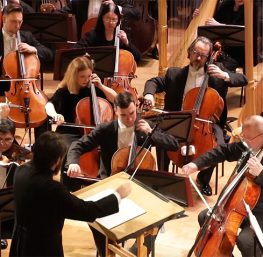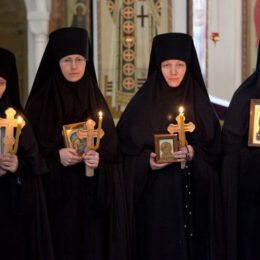City Journal | Roger Scruton | Spring 2009
We must rescue art from the modern intoxication with ugliness.
At any time between 1750 and 1930, if you had asked an educated person to describe the goal of poetry, art, or music, “beauty” would have been the answer. And if you had asked what the point of that was, you would have learned that beauty is a value, as important in its way as truth and goodness, and indeed hardly distinguishable from them.
Philosophers of the Enlightenment saw beauty as a way in which lasting moral and spiritual values acquire sensuous form. And no Romantic painter, musician, or writer would have denied that beauty was the final purpose of his art.
At some time during the aftermath of modernism, beauty ceased to receive those tributes. Art increasingly aimed to disturb, subvert, or transgress moral certainties, and it was not beauty but originality—however achieved and at whatever moral cost—that won the prizes. Indeed, there arose a widespread suspicion of beauty as next in line to kitsch—something too sweet and inoffensive for the serious modern artist to pursue. In a seminal essay—“Avant-Garde and Kitsch,” published in Partisan Review in 1939—critic Clement Greenberg starkly contrasted the avant-garde of his day with the figurative painting that competed with it, dismissing the latter (not just Norman Rockwell, but greats like Edward Hopper) as derivative and without lasting significance. The avant-garde, for Greenberg, promoted the disturbing and the provocative over the soothing and the decorative, and that was why we should admire it.
The value of abstract art, Greenberg claimed, lay not in beauty but in expression. This emphasis on expression was a legacy of the Romantic movement; but now it was joined by the conviction that the artist is outside bourgeois society, defined in opposition to it, so that artistic self-expression is at the same time a transgression of ordinary moral norms. We find this posture overtly adopted in the art of Austria and Germany between the wars—for example, in the paintings and drawings of Georg Grosz, in Alban Berg’s opera Lulu (a loving portrait of a woman whose only discernible goal is moral chaos), and in the seedy novels of Heinrich Mann. And the cult of transgression is a leading theme of the postwar literature of France—from the writings of Georges Bataille, Jean Genet, and Jean-Paul Sartre to the bleak emptiness of the nouveau roman.
Of course, there were great artists who tried to rescue beauty from the perceived disruption of modern society—as T. S. Eliot tried to recompose, in Four Quartets, the fragments he had grieved over in The Waste Land. And there were others, particularly in America, who refused to see the sordid and the transgressive as the truth of the modern world. For artists like Hopper, Samuel Barber, and Wallace Stevens, ostentatious transgression was mere sentimentality, a cheap way to stimulate an audience, and a betrayal of the sacred task of art, which is to magnify life as it is and to reveal its beauty—as Stevens reveals the beauty of “An Ordinary Evening in New Haven” and Barber that of Knoxville: Summer of 1915. But somehow those great life-affirmers lost their position at the forefront of modern culture.
So far as the critics and the wider culture were concerned, the pursuit of beauty was at the margins of the artistic enterprise. Qualities like disruptiveness and immorality, which previously signified aesthetic failure, became marks of success; while the pursuit of beauty became a retreat from the real task of artistic creation. This process has been so normalized as to become a critical orthodoxy, prompting the philosopher Arthur Danto to argue recently that beauty is both deceptive as a goal and in some way antipathetic to the mission of modern art. Art has acquired another status and another social role.
[…]
It is not merely that artists, directors, musicians, and others connected with the arts are in flight from beauty. Wherever beauty lies in wait for us, there arises a desire to preempt its appeal, to smother it with scenes of destruction. Hence the many works of contemporary art that rely on shocks administered to our failing faith in human nature—such as the crucifix pickled in urine by Andres Serrano. Hence the scenes of cannibalism, dismemberment, and meaningless pain with which contemporary cinema abounds, with directors like Quentin Tarantino having little else in their emotional repertories. Hence the invasion of pop music by rap, whose words and rhythms speak of unremitting violence, and which rejects melody, harmony, and every other device that might make a bridge to the old world of song. And hence the music video, which has become an art form in itself and is often devoted to concentrating into the time span of a pop song some startling new account of moral chaos.
Those phenomena record a habit of desecration in which life is not celebrated by art but targeted by it. Artists can now make their reputations by constructing an original frame in which to display the human face and throw dung at it. What do we make of this, and how do we find our way back to the thing so many people long for, which is the vision of beauty? It may sound a little sentimental to speak of a “vision of beauty.” But what I mean is not some saccharine, Christmas-card image of human life but rather the elementary ways in which ideals and decencies enter our ordinary world and make themselves known, as love and charity make themselves known in Mozart’s music. There is a great hunger for beauty in our world, a hunger that our popular art fails to recognize and our serious art often defies.
. . . more



